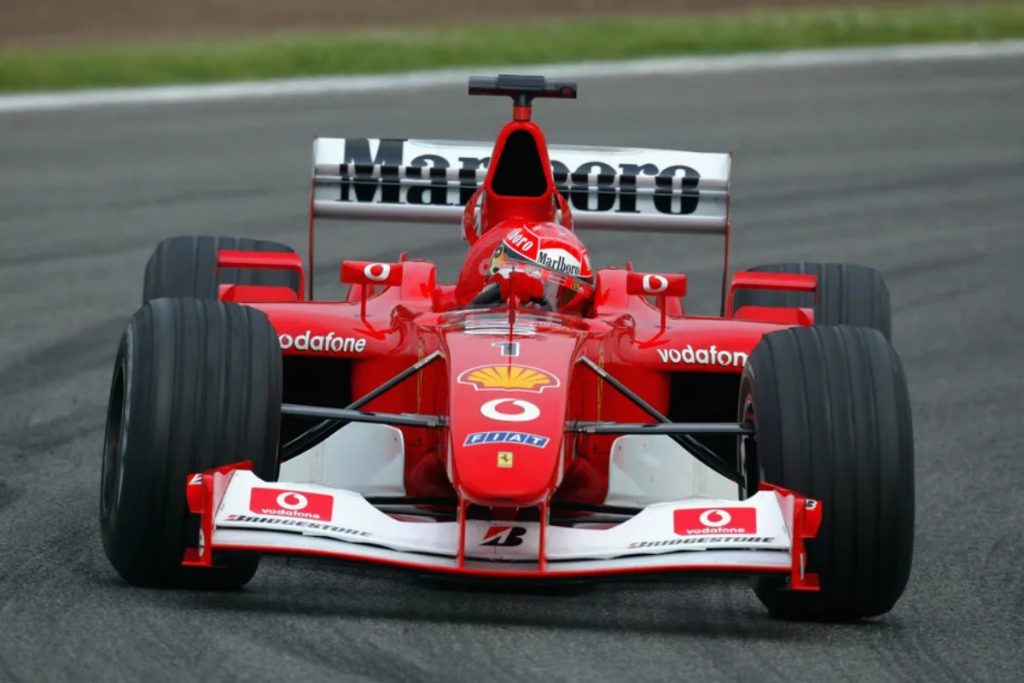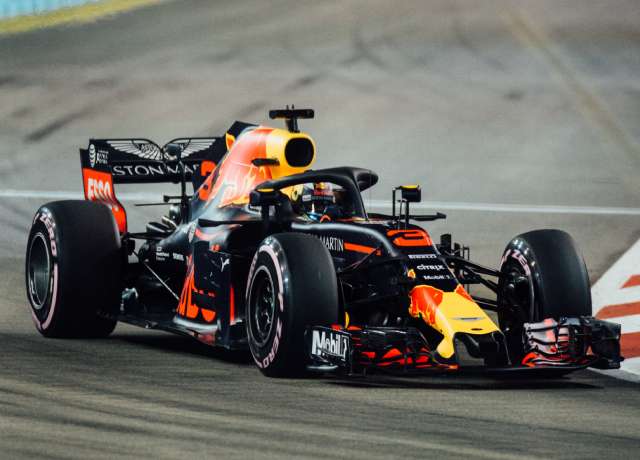While Formula One has produced many spectacular race vehicles over the years, some have become more famous than others
For most of the last century, Formula 1 has been the pinnacle of motorsport and automobile engineering. F1 is often regarded as the pinnacle of worldwide motorsport racing because it features many teams that develop, construct, and race cars according to a strict formula.
This formula is updated yearly and is deliberately designed to encourage innovation and creativity within the industry.
As a result, numerous innovative technologies for the automobile sector have been developed. In this way, developing a successful Formula 1 car can benefit both the marketing and development of cars in the business.
While you may have a favorite F1 team or car, here are ten of the most famous Formula One cars of all time.
10. Ferrari Tipo 500
The Ferrari Tipo 500 was a Formula 2 racing car that was used while the official World Championship was staged under F2 regulations.
Aurelio Lampredi designed this incredible piece of engineering, which went on to win two Drivers’ Championships and two Constructors’ Championships.
The Ferrari Tipo 500 was a tubular-frame single-seater Formula 2 vehicle. The front suspension was double-wishbone, while the rear suspension was De Dion axle. The Tipo 500 also had a Lampredi L4 engine with a 4-speed manual transmission.
9. McLaren-Honda MP4/4
The McLaren MP4/4 was one of McLaren’s most successful Formula One vehicles. The MP4/4 was built using a carbon fiber honeycomb monocoque, double wishbone suspension, and a 6-speed manual transmission in collaboration with Honda’s power unit.
The McLaren MP4/4 was powered by a turbocharged V6 engine that produced 650 to 700 horsepower at over 12,000 rpm. Alain Prost and Ayrton Senna both drove the F1 car, with Senna winning the 1988 Drivers’ Championship.
8. Lotus 72
For the 1970 Formula One season, Maurice Philippe and Colin Chapman designed the Lotus 72. Lotus’ latest model included inboard brakes and side-mounted radiators in the side pods.
The Lotus 72 had a naturally aspirated V8 engine that produced over 440 horsepower at over 10,000 rpm.
From 1970 through 1975, this car served as the foundation for Lotus. Lotus won three Constructors’ Championships and two Drivers’ Championships during this period. This included winning approximately 20 races and appearing 39 times on the podium.
7. Benetton B195
The Benetton B195, designed by Formula One veteran Ross Brawn, won the 1995 Formula One World Championship. The B195 was powered by a Renault power unit and featured a V10 engine capable of producing over 675 horsepower at over 15,000 rpm.
The B195 is well-known for propelling Michael Schumacher to his maiden Drivers’ World Championship title in 1995. The remarkable race car won 11 of its 17 races, as well as four pole positions and eight fastest lap trophies.
6. Williams FW14/B
Williams designed and introduced the FW14/B for the 1992 Formula One season. Mansell’s Williams car won a record-breaking nine races throughout the season, securing the 1992 Drivers’ Championship.
The Williams was powered by a Renault V10 engine capable of producing over 700 horsepower at 12,000 rpm. In addition, active suspension replaced the pushrod, inboard spring suspension of the 1991 model in the 1992 season.
5. Brawn BGP 001
Brawn is one of the most unusual and successful Formula One teams in history. This is because Brawn mastered the new regulations in 2009, winning both the Constructors’ and Drivers’ Championships in their first and only season in Formula 1.

The Brawn BGP 001 featured wishbone and pushrod suspension as well as a Mercedes-Benz 2.4-liter naturally aspirated V8. The 750 hp engine was designed for several cars on the grid that year, but it was rendered useful by Brawn’s dynamic aerodynamic package.
This contributed to Jenson Button’s sole Drivers’ Championship and the team’s first and only Constructors’ Championship.
4. Ferrari F2002
The Ferrari F2002 has to be one of the most successful and well-known Formula One vehicles in recent history. The Ferrari F2002 was conceived and built by Scuderia Ferrari Marlboro for the 2002 Formula One World Championship season.
The Ferrari F2002 replaced the F2001 with a naturally aspirated 3-liter V10 and a new 7-speed automatic transmission.

At nearly 17,000 rpm, this powerplant produced 835 horsepower. During the 2002 and 2003 seasons, this model earned 15 race wins, 28 podiums, 11 pole positions, and 15 fastest lap accolades. During this time, Ferrari also managed to win both the Drivers’ and Constructors’ Championships.
3. Mercedes F1 W07 Hybrid
The W05 was Mercedes-Benz’s fifth F1 car, but it was their first Championship-winning model. The W05 was Mercedes’ first hybrid-powered F1 vehicle, designed by some of the best F1 engineers.

The 1.6-liter Hybrid V6 produced over 800 hp and was equipped with an electric motor and an ERS system for further power.
Mercedes won their first Constructors’ and Drivers’ Championships because to the turbocharged engine and carbon-fiber body.
The W05 won 16 of the 19 races in 2014, with 11 of them being 1-2 finishes by Hamilton and Rosberg. The W05 finished with 16 victories, 31 podiums, 18 pole positions, and 12 fastest lap honors.
2. Red Bull RB9
Red Bull does not sell automobiles. They market energy drinks. The RB9, on the other hand, is by far one of the most famous and iconic Formula One vehicles in recent history. The RB9 was built for the 2013 Formula One season and had a Renault power unit that produced over 750 horsepower.

Despite Red Bull’s winning streak, the 2013 Formula One season was hotly contested as a development war between some of the sport’s best teams.
Red Bull had a lot of work to do in the second half of the season after finishing first and sixth in the first race. This enabled Vettel to win nine consecutive Grand Prix, securing his fourth World Championship in a row.
1. Mercedes-AMG W11 EQ Performance
While the Mercedes-Benz F1 team was dominating F1, the Mercedes W11 took it to another level. This was owing to the refinement of the turbo-hybrid power unit, as well as the development of dynamic, innovative motorsport technology for the 2020 season.
Mercedes designed a dual-axis steering system (DAS) for the 2020 Formula One season, despite controversy. This allows the driver to alter the angle of the front wheels by pushing and pulling on the steering wheel.

The modification in angle allowed for increased grip in specific areas of the track, resulting in a dominant performance in the 2020 season. This resulted in Lewis Hamilton’s record-equaling seventh World Drivers’ Championship, as the W11 won 13 of the 17 races.











